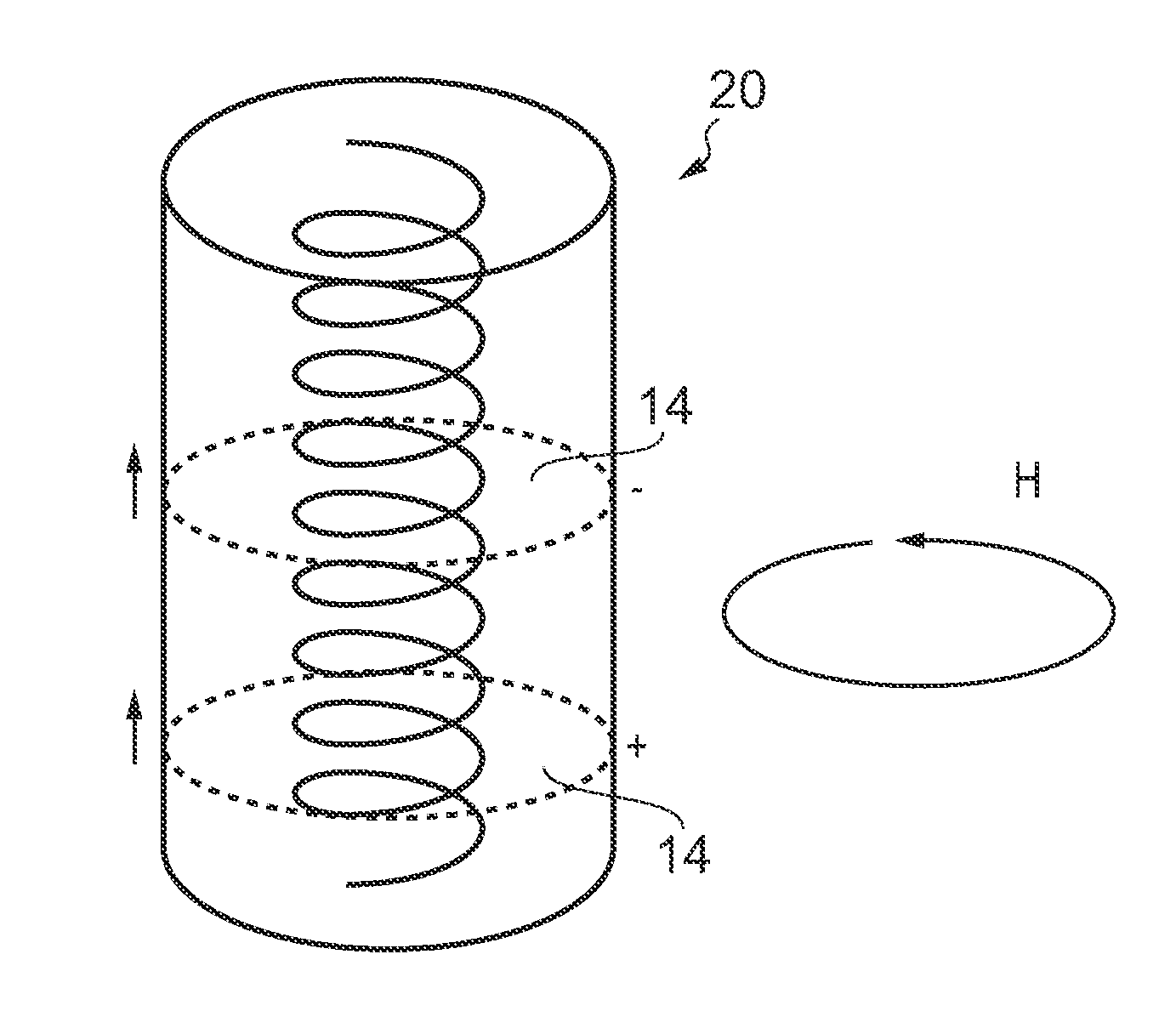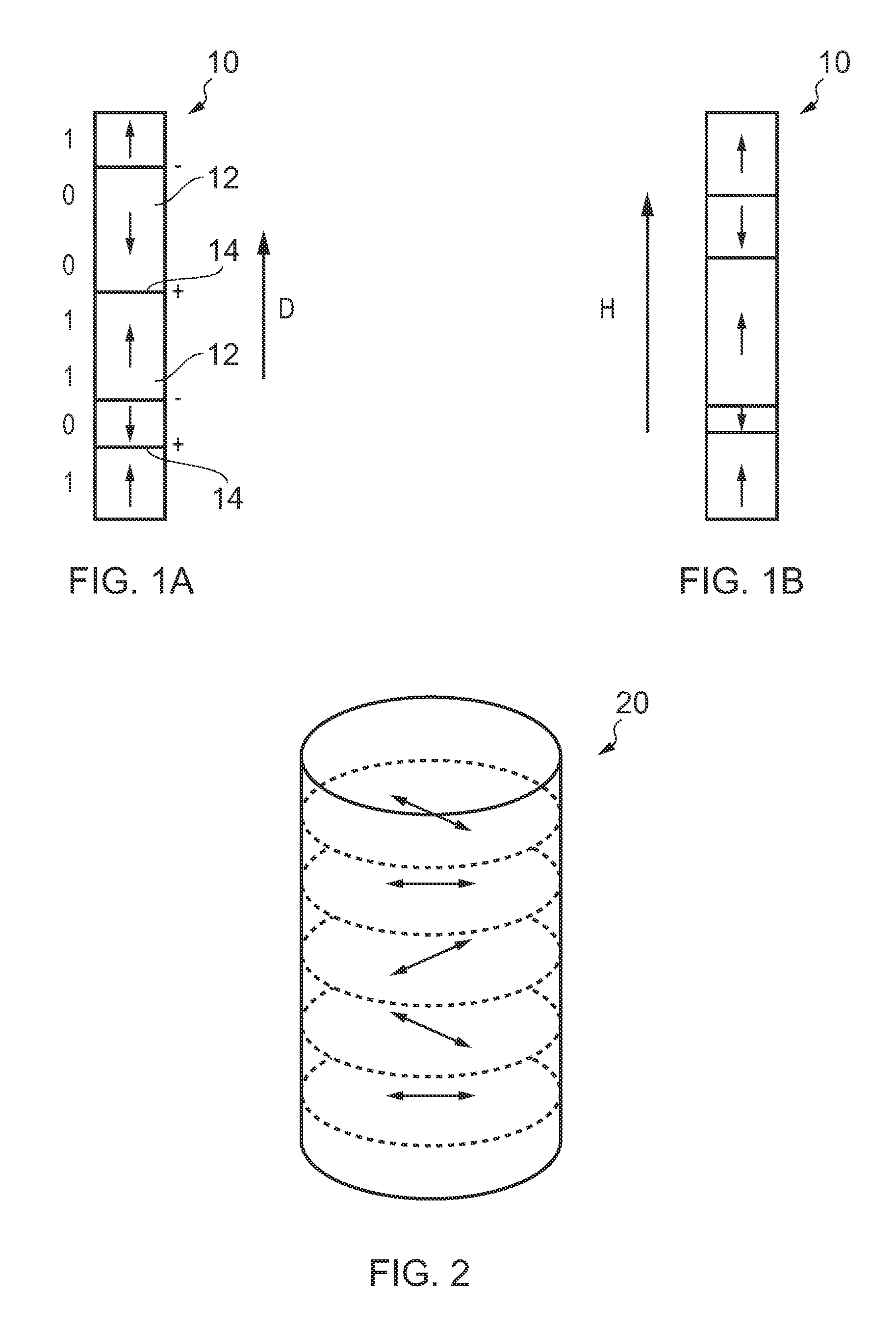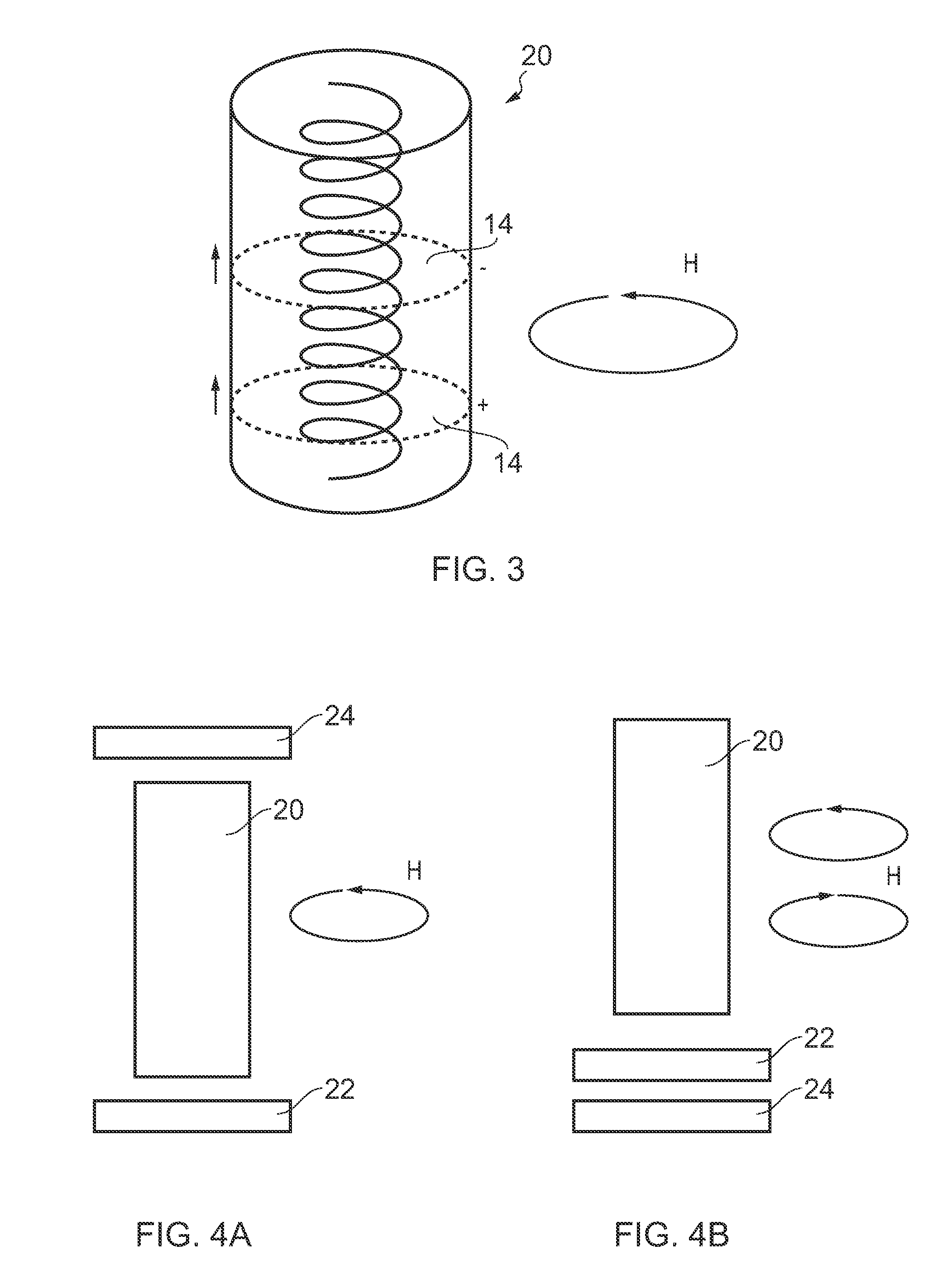Magnetic Data Storage Device and Method
- Summary
- Abstract
- Description
- Claims
- Application Information
AI Technical Summary
Benefits of technology
Problems solved by technology
Method used
Image
Examples
example 1
[0076]300 nm diameter pillars arranged on a substrate in a 350 nm square pitch. Each pillar is 3 μm high, and the pitch of the anisotropy spiral is 100 nm. These dimensions represent conservative values for the capability for lithography (current state of the art lithography resolution being 45 nm). The spiral pitch is selected so that it is not less than the width of a domain wall for the anisotropy of the magnetic material (so that the domain walls are properly separated for correct propagation along the spiral by the rotating magnetic field); in this example the pitch is approximately equal to the wall width, although a bigger pitch may be optimum. These values give an effective areal density of 160 Gbits / inch2, which is 16 times higher than the current state of the art for Flash memory even though the selected values are conservative.
example 2
[0077]Magnetic material in anodic aluminium oxide pores, the pores on a 200 nm square pitch. However, to avoid any alignment difficulties, the data input and read-out elements are 1 μm2, so that each addresses multiple nanowires (thereby reducing the data density). The pores are 1 mm in height, and the pitch of the anisotropy spiral is 50 nm. This gives an effective areal density of 13,000 Gbits / inch2, vastly superior to the state of the art for either hard disk drives or Flash memory.
[0078]Thus, it can be seen that the present invention offers great potential for offering improvements in data storage.
[0079]The term “nanowire” is used throughout this specification and the appended claims. However, it is not intended that the invention be limited to structures of magnetic material with dimensions that strictly comply with this term. Any magnetic material structure having dimensions that allow formation and propagation of domain walls in the described manner is intended to be included...
PUM
 Login to View More
Login to View More Abstract
Description
Claims
Application Information
 Login to View More
Login to View More - R&D
- Intellectual Property
- Life Sciences
- Materials
- Tech Scout
- Unparalleled Data Quality
- Higher Quality Content
- 60% Fewer Hallucinations
Browse by: Latest US Patents, China's latest patents, Technical Efficacy Thesaurus, Application Domain, Technology Topic, Popular Technical Reports.
© 2025 PatSnap. All rights reserved.Legal|Privacy policy|Modern Slavery Act Transparency Statement|Sitemap|About US| Contact US: help@patsnap.com



